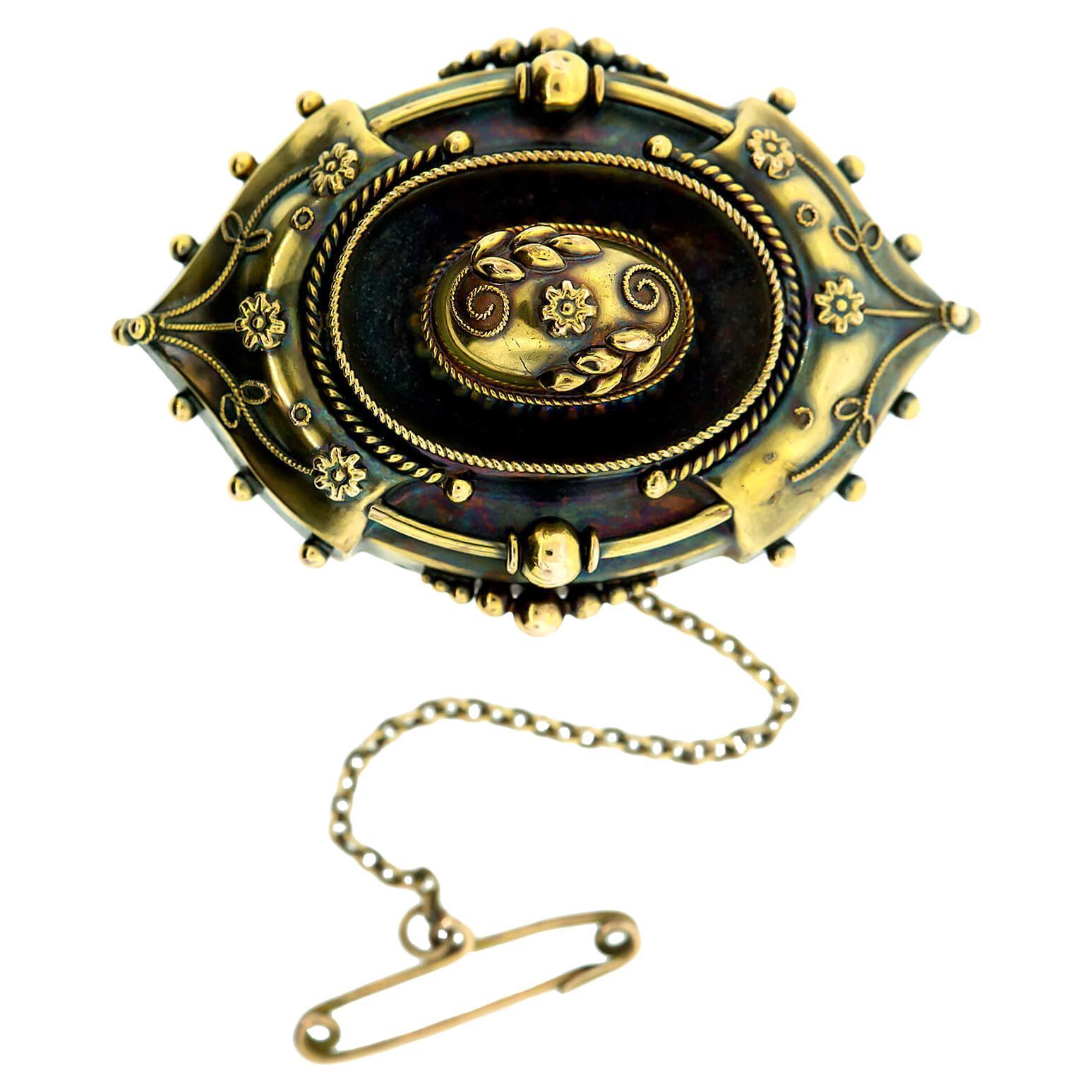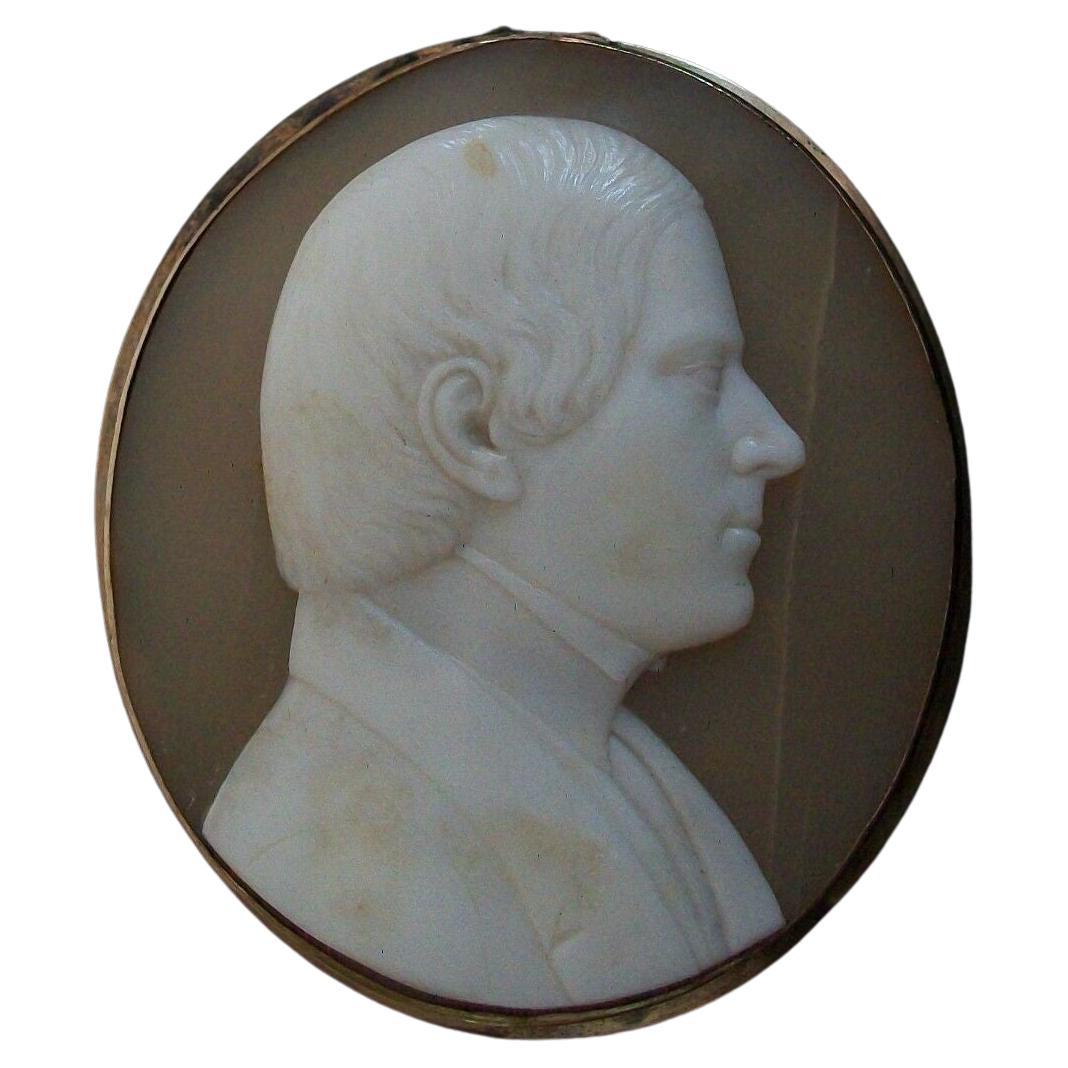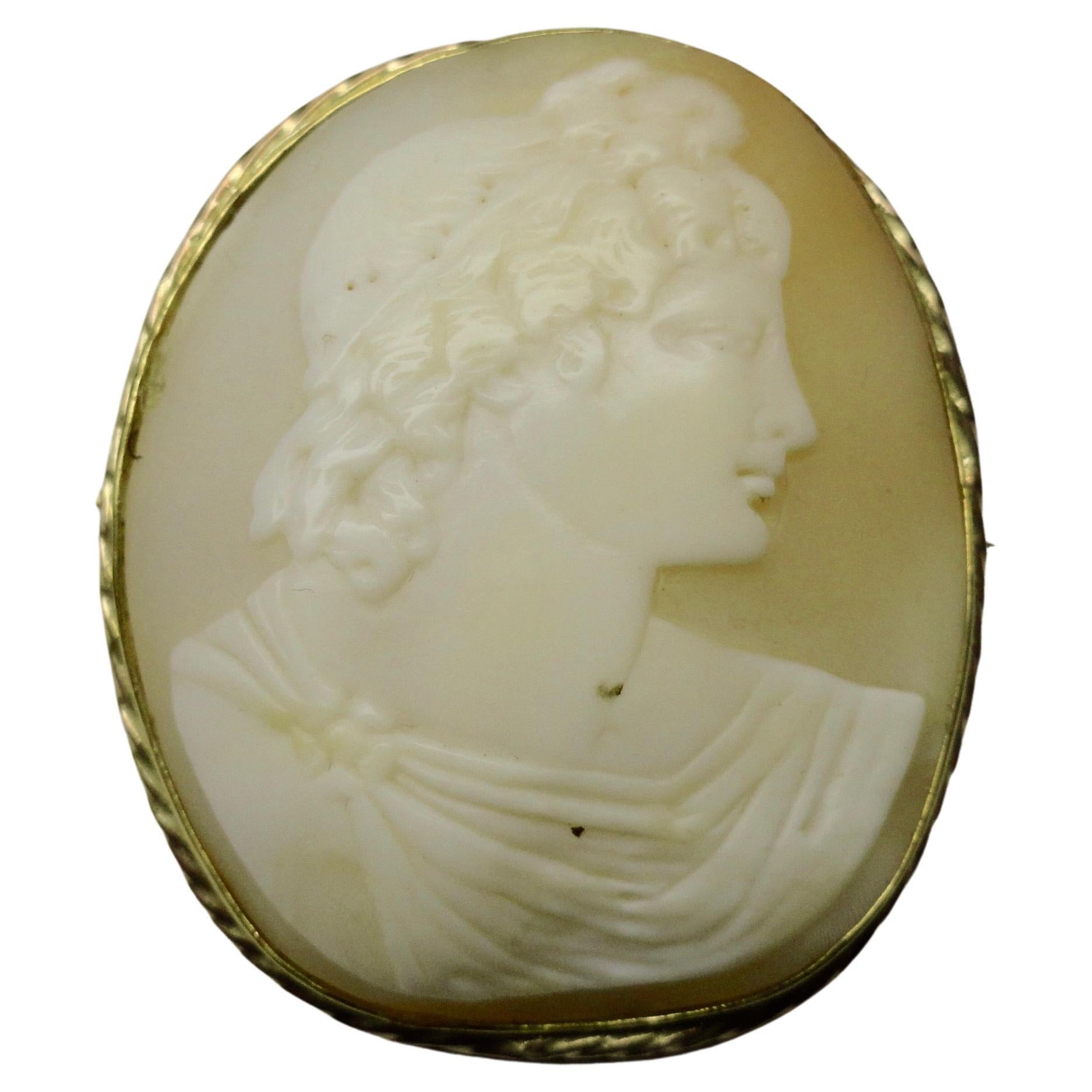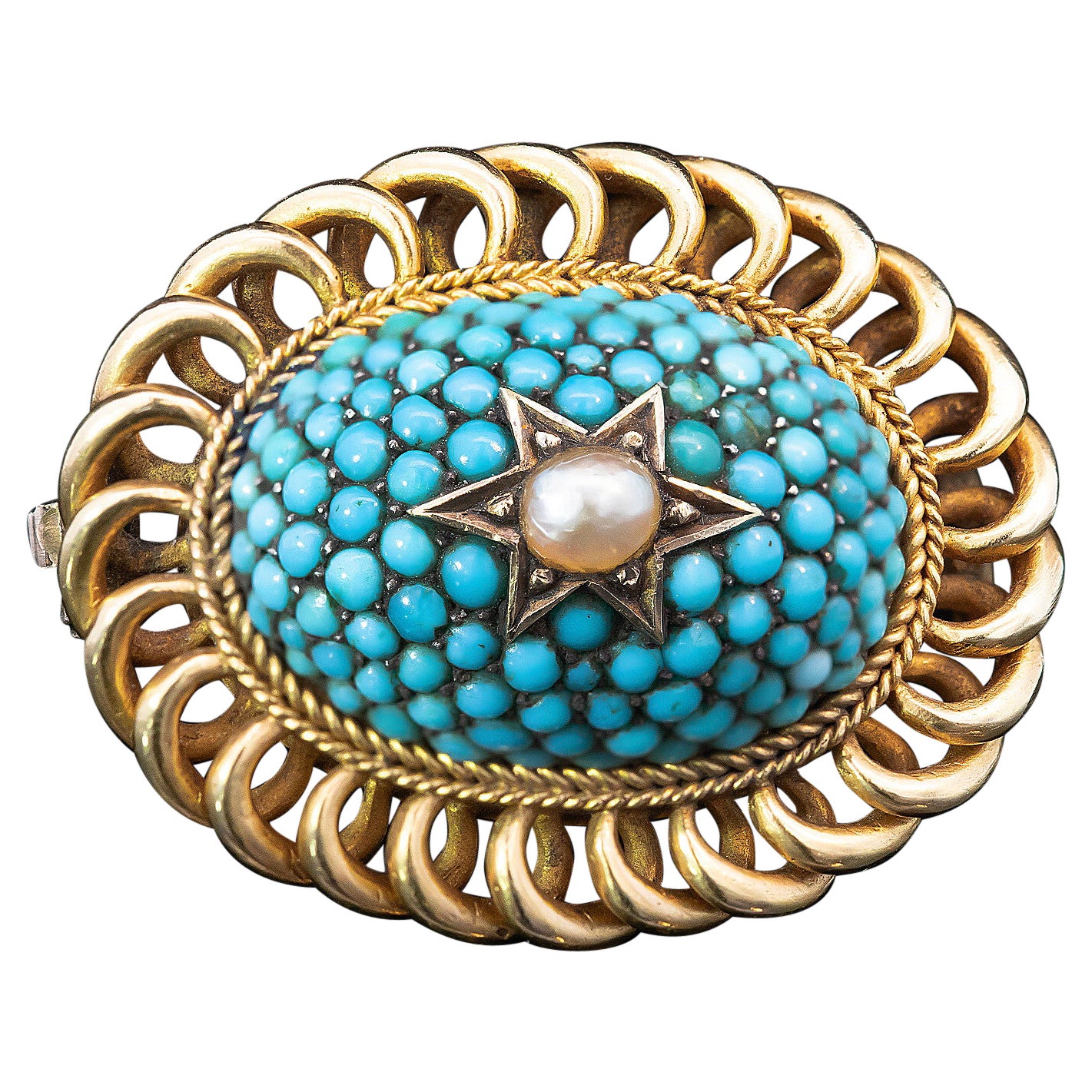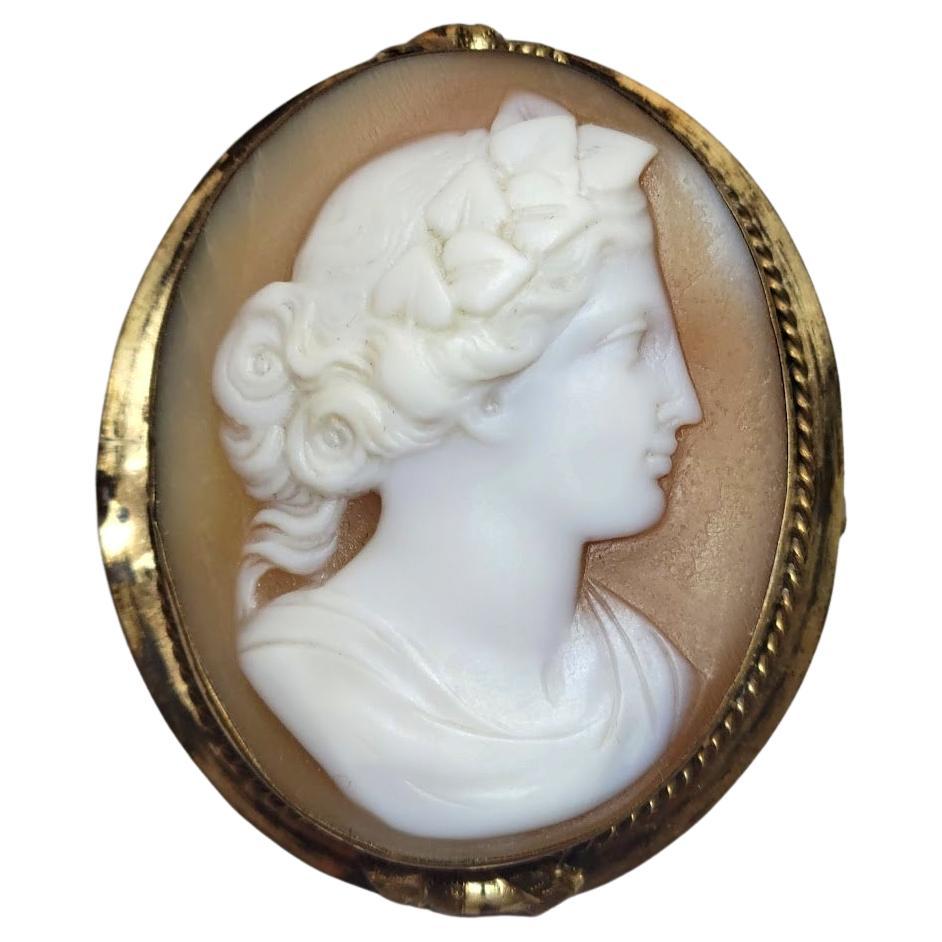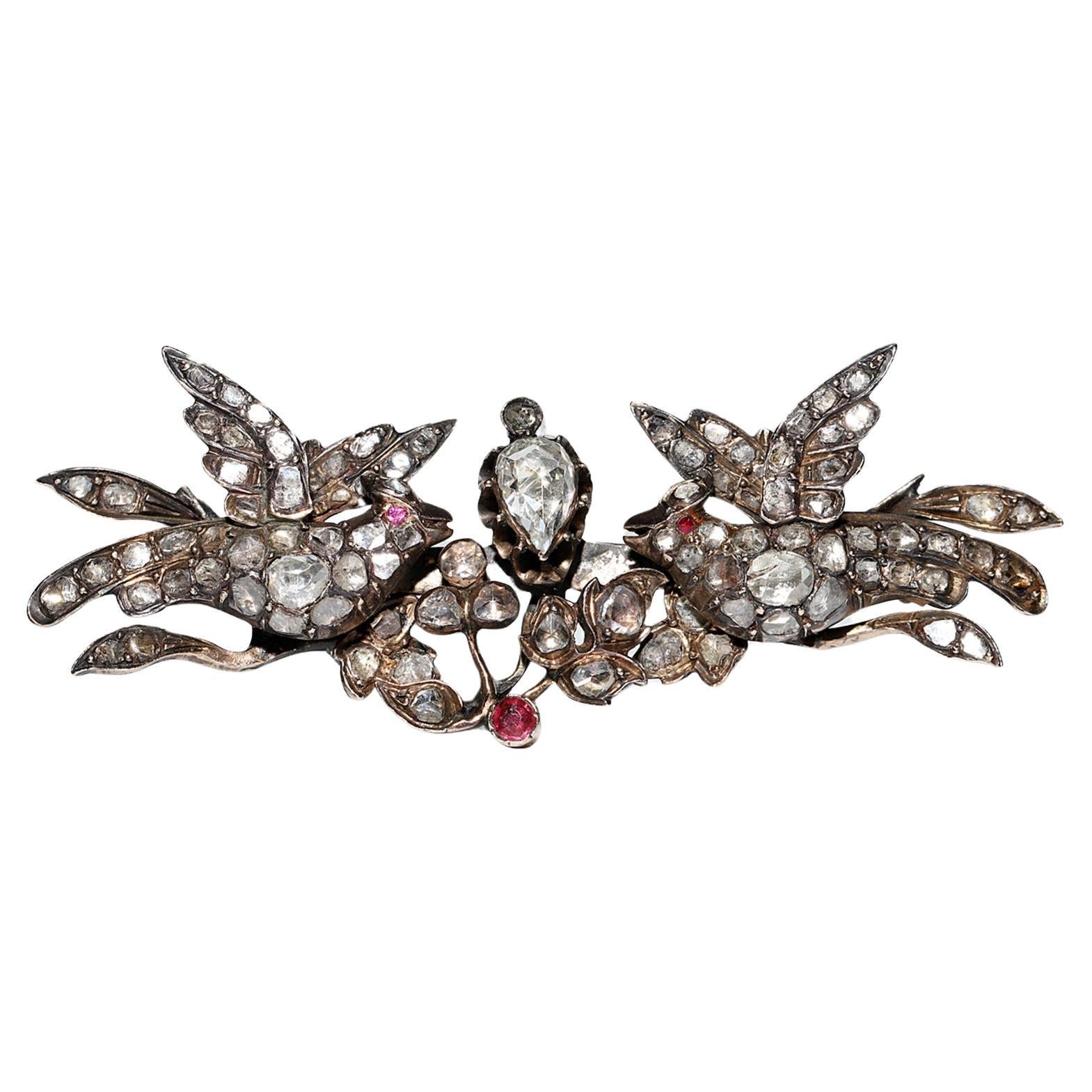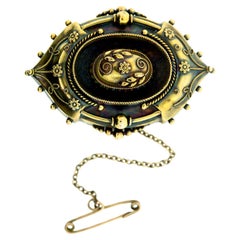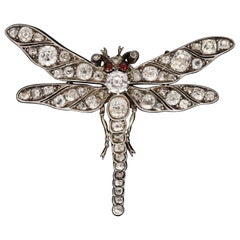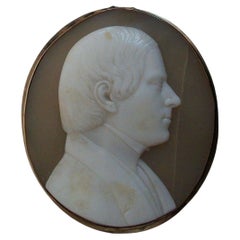
Gemolithos Antique Shell Cameo Gold Brooch-locket, circa 1870s
View Similar Items
1 of 5
Gemolithos Antique Shell Cameo Gold Brooch-locket, circa 1870s
About the Item
- Metal:18k Gold
- Weight:5 g
- Dimensions:Width: 0.99 in (25 mm)Length: 0.99 in (25 mm)
- Style:Victorian
- Place of Origin:Unknown
- Period:Mid-19th Century
- Date of Manufacture:1870´s
- Condition:Wear consistent with age and use.
- Seller Location:Munich, DE
- Reference Number:1stDibs: LU106137860712
You May Also Like
- Mid-Victorian 15k Yellow Gold Brooch with Locket Circa 1870sLocated in ADELAIDE, SAThis is one Mid-Victorian Brooch in 15k yellow gold that showcases the beautiful patina which has oxidized with time. Fine floral granulation work in the Etruscan revival style, hand...Category
Antique 1870s Victorian Brooches
MaterialsYellow Gold
- Victorian Antique Diamond Dragonfly Brooch circa 1870sLocated in London, GBA beautiful Victorian diamond dragonfly brooch, c.1870s, the openwork design realistically modelled in silver and gold depicting a dragonfly i...Category
Antique Late 19th Century English Brooches
MaterialsDiamond, Gold, Silver
- Victorian Gentleman's Shell Cameo Brooch, Gold Setting, U.K., Circa 1870'sLocated in Chatham, CAExceedingly rare Victorian custom made hand carved gentleman's shell cameo brooch or pin - right facing portrait - a sign of wealth and prestige when worn by 18th and 19th century gentlemen (Napoleon wore one on his wedding day) - gold filled setting with tube hinge and extra long pin...Category
Antique Late 19th Century British Victorian Brooches
MaterialsGold-filled
$1,400 Sale Price30% OffFree Shipping - Antique Shell Cameo BroochLocated in Milano, MIAntique shell cameo of very fine manufacture and particular subject depicting a classical male bust, with delicate gold setting. From the beginning of ...Category
Antique 19th Century Brooches
Materials18k Gold
- Antique Victorian 1870s Tortoiseshell Piqué BroochLocated in London, GBIntroducing our antique Victorian tortoiseshell piqué brooch, popular in the 1820s and 1870s. This exquisite heirloom piece is a testament to the fine craftsmanship of the Victorian era. The large round brooch is made with tortoiseshell piqué that looks stunning with its gold and silver inlay. In the Victorian era Tortoiseshell was used in mourning jewellery...Category
Antique 18th Century English Victorian Brooches
Materials9k Gold
- John Brogden Shell Cameo Brooch and Earrings, English, circa 1870By John BrogdenLocated in London, GBAntique shell cameo brooch and earrings by John Brogden, English, circa 1870. A yellow gold suite of jewellery, the brooch composed of a horizontally situated oval Bull’s Mouth shell cameo of the Greek goddess Selene riding a serpentine dragon in a rubover collet setting, encircled by a conforming frame of gold beading and twisted gold wire punctuated with four gold palmette form plaques engraved and decorated with dark blue enamel and placed at the cardinal points, the reverse mounted with a hinged pin and scroll clasp, the earrings each composed of a vertical oval Bull’s Mouth shell cameo engraved with a bust length portrait of Selene with crescent-set headdress, encircled by a conforming frame matching that of the brooch with the addition of a pendant decoration composed of a horizontal bar of gold beading and twisted gold wires suspending gold link chains graduated from centre and ending in conical gold elements, the reverses mounted with French wire fittings, all in a fitted red leather case, the interior marked ‘FIRST CLASS PARIS MEDAL/ 1855.1867.1851/ PARIS FIRST CLASS & LONDON PRIZE MEDALS/ JOHN BROGDON/ Goldsmith/ MANUFACTORY/ 16, Henrietta St. Covent Garden/ London’. The cameo—defined as a gem, usually either a mineral or a shell, upon which a design has been carved in relief—is believed to have originated in Hellenistic Greece, during the third century BC. These miniature sculptures, at that time confined to the medium of hardstone, are thought to have been made with the primary purpose of personal adornment. The same practice of mounting cameos in jewellery was then continued by the Ancient Romans, and they are known to have been worn by many a Roman emperor. After the fall of Rome the fashion for cameos went into a decline, until it was again revived during the Renaissance period, brought about by a keen interest in the ancient world. At this time both antique and contemporary cameos were mounted in jewellery, as well as collected as objet d’art. The art of cameo cutting was revived in Italy, where it would remain a centre for the coming centuries. Again there was a lull in interest in carved gemstones, until the Neoclassical revival of the eighteenth century, largely stimulated by the discoveries of the ancient Roman cities of Pompeii and Herculaneum. As with the Renaissance, antique specimens were generally prized over modern cameos, and the worldliest men in Europe held them among their collections of art and antiques. That said, carving centres in Rome and Torre del Greco (near Naples) in Italy were established in response to the demand of the Grand Tourists, who travelled to Italy and Greece to become educated in the wonders of the ancient world. It was at this time that shell cameos, mostly made in Torre del Greco due to its proximity to the sea, became more popular, owing to the relative ease in carving shell over hardstone. In addition to Rome, hardstone cameos also became a specialty of Idar Oberstein, Germany, which had a long history with both the gem mining and cutting trade. In a shift away from the collector’s cases of the previous century, the nineteenth century saw a strengthening in the fashion for wearable cameos. After the Empress Josephine donned a cameo-set suite of jewellery at the coronation of Napoleon in 1804, cameo jewellery became all the rage. Napoleon played a further hand in promoting the art by establishing a gemstone carving school in Paris, inspired by his appreciation for the arts of the ancient world. By the mid-nineteenth century shell cameos, in part due to their lightness compared with hardstone cameos, were the height of fashion. Large shell cameos as well as hardstone cameos were set into contemporary mounts, often as suites of jewellery. Some of the best cameos of the nineteenth century—carved by a select group of recognized carvers—were set into revivalist mounts, corresponding to the subject matter. In Victorian England cameo jewellery was particularly prized, due in part to the fact that the Queen owned and wore a number of cameo jewels. One example which can often be seen in official portraits is the Badge of the Order of Victoria and Albert, carved by Tommaso Saulini of Rome, who also produced cameos for the maker of the present suite, John Brogden. To meet demand some carvers set themselves up in London, including William Schmidt, a German carver from Idar Oberstein, who produced cameos for top London jewellers, including Brogden, Carlo Giuliano and Child & Child. In fact, Schmidt purports to have been the first to carve cameos out of opal, which Brogden reportedly displayed in the Paris Exhibition of 1878. An extant example, now in the collection of the British Museum, was set by the Giuliano firm. Regarding subject matter, cameos throughout time have been largely figural, from bust length profile portraits to scenes with multiple full-length figures, and sometimes animals. Ancient Greek and Roman cameos often depicted mythological scenes as well as contemporary figures. During the Renaissance, mythological scenes were popular, often taken directly from ancient sculpture, as well as portraits of notable contemporary figures. During the eighteenth and nineteenth centuries, due to the revivalist styles, both Renaissance and Classical subjects were copied and set into matching (and sometimes unmatching) revivalist mounts. From the Renaissance through the Victorian era, being able to recognize the source of the carving in a cameo was a mark of erudition, revealing in the wearer knowledge of Classical art. As mentioned, the present cameo parure...Category
Antique 1870s English Victorian Brooches
MaterialsYellow Gold
Recently Viewed
View AllMore Ways To Browse
Antique Gold Lockets
Antique Gold Jewelry Locket
Antique Jewelry Museum
19th Century Locket
Antiques Gold Hair
Childrens Jewelry
Antique Victorian Gold Locket
1870s Jewellery
Antiquity Jewelry
Antique Locket 19th Century
18k Victorian Locket
Night Sky Jewelry
Cameo Relief
Antique 18k Locket
Antique 18k Gold Locket
Childrens Jewellery
Children Jewlery
Animal Brooch Gold
